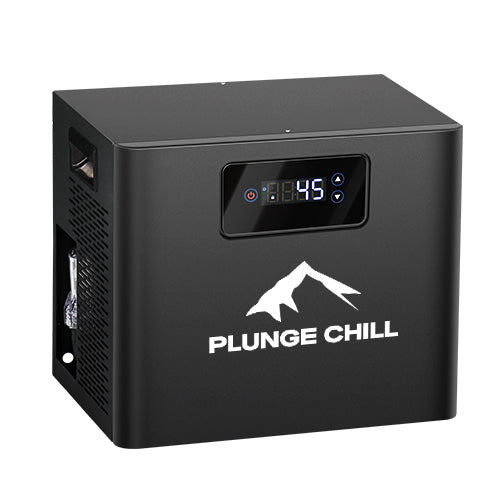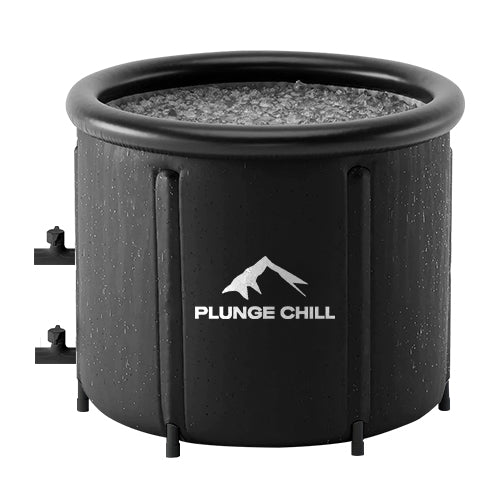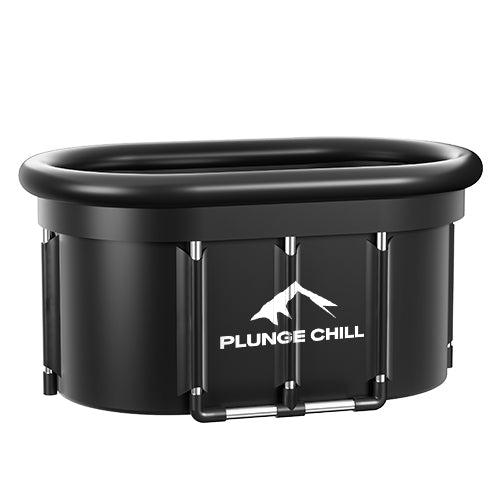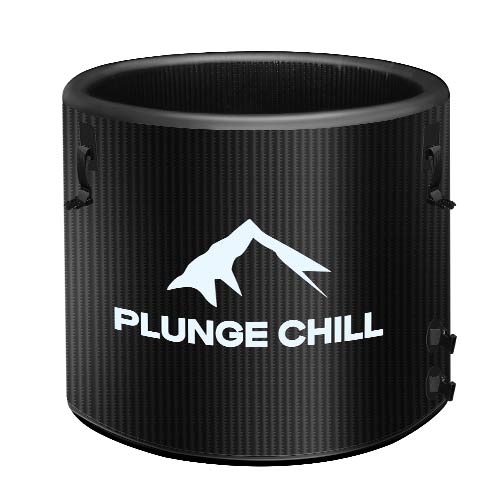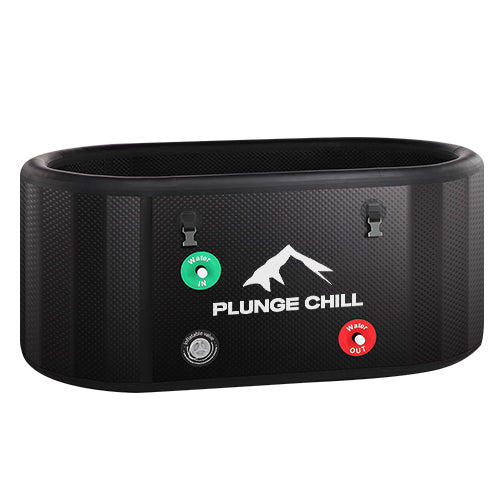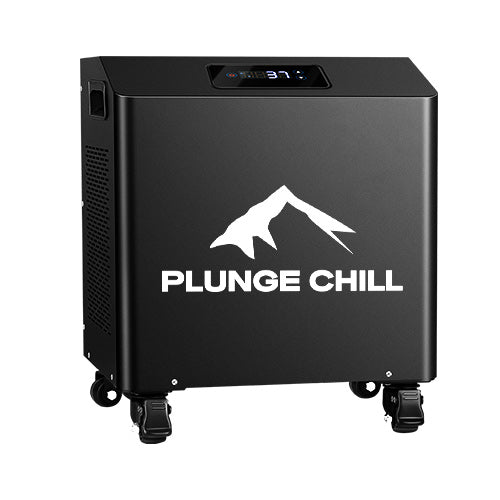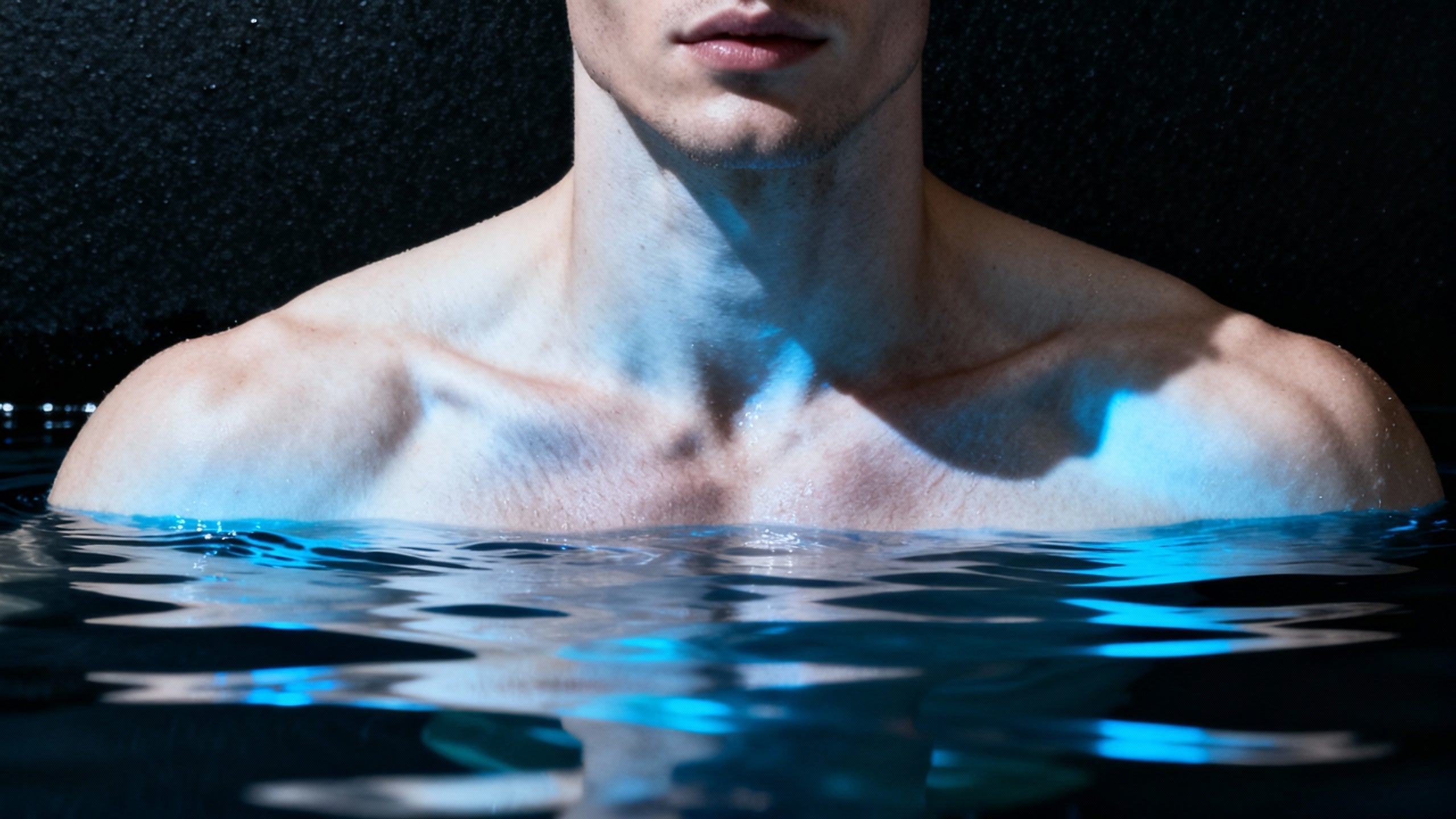Cold plunges are no longer a niche recovery trick. In my practice as a sports rehabilitation specialist and strength coach, and in hands-on testing of dozens of cold plunge systems, I’ve seen how precisely dosed cold exposure can nudge metabolism, sharpen stress resilience, and, when misapplied, blunt training adaptations. This article explains how cold water activates brown adipose tissue, what that means for energy expenditure and glucose control, and how to program and purchase cold-plunge equipment with the same rigor you’d bring to a strength plan. The tone here is neutral and evidence-based, drawing on human trials, systematic reviews, and physiological texts, with practical guidance for athletes, coaches, and health-focused users.
Brown Fat, Thermogenesis, and Why Cold Water Is Different
Brown adipose tissue is a mitochondria‑dense fat depot that burns fuels to generate heat through a protein called UCP1. Two broad heat‑making pathways are relevant in the cold. Shivering thermogenesis relies on involuntary muscular contractions that can raise metabolic rate several-fold. Non‑shivering thermogenesis is the brown fat pathway that increases energy expenditure without muscular work. In water, convective heat loss is far greater than in air, so equivalent temperatures feel harsher and drive a larger thermogenic response; this is why a brief cold bath can elicit a strong metabolic effect compared with a cool room. Early physiology texts questioned whether humans rely meaningfully on non‑shivering thermogenesis, but modern imaging and tracer studies show human brown fat is present and can be activated by cold exposure, increasing both activity and volume in response to cold in healthy adults. This shift in consensus likely reflects newer PET/MR imaging and standardized cold protocols that were not widely available when earlier skepticism was published.
|
Mechanism |
Primary tissues |
Fuel emphasis |
Typical trigger |
What to expect |
|
Shivering thermogenesis |
Skeletal muscle |
Carbohydrate dominant during intense shivering |
Uncompensable cold, especially water |
Rapid VO2 rise and high caloric burn; strong cold stress |
|
Non‑shivering thermogenesis |
Brown adipose tissue |
Mixed substrates; glucose becomes limiting when activated |
Mild to moderate cold near non‑shivering threshold |
Moderate VO2 rise; substrate clearance; less discomfort |
|
“Browning” of white fat |
Subcutaneous white adipose tissue |
Long‑term remodeling |
Repeated cold exposure over weeks |
Clear in rodents; in humans, consistent recruitment remains uncertain (Journal of Applied Physiology) |
What the Evidence Says About Metabolism
Multiple human trials converge on a simple point: acute cold increases energy expenditure and activates brown fat. A systematic review and meta‑analysis of randomized trials in healthy adults reported an approximate 188 kcal per day increase in energy expenditure with mild cold compared to room temperature, alongside measurable increases in brown fat volume and activity (PubMed Central). In parallel, controlled physiology work indicates that in mild cold, skeletal muscle accounts for roughly half or more of oxygen consumption, with that contribution rising as the stimulus intensifies, especially in water where heat loss accelerates (Journal of Applied Physiology). These human data are complemented by imaging studies showing that during cold exposure, supraclavicular brown fat becomes less lipid‑dense on MRI, consistent with active triglyceride utilization and increased perfusion (Nature Scientific Reports).
The glucose side of the story matters as well. Using metabolic tracing, systems biology work demonstrates that cold provokes cross‑tissue rewiring: liver output of glucose rises, white fat liberates substrates, and brown fat ramps glucose uptake to fuel thermogenesis (Science Advances). In practical terms, brown fat uses both fats and glucose, and inadequate glucose availability can cap thermogenic output. This has implications for people using insulin or sulfonylureas, whose medication could predispose them to hypoglycemia during or after cold exposure if dosing and carbohydrate intake are not adjusted.
Across weeks of intermittent cold, the picture becomes more nuanced. A narrative review of intermittent cold exposure summarized that while brown fat activity and beiging signals often increase, body weight and fat mass usually do not fall in humans. The primary reasons are energy balance dynamics: energy expenditure goes up during exposure, but several studies observed compensatory increases in appetite and intake, and basal metabolic rate at thermoneutrality can even fall in some contexts such as in overweight adults with type 2 diabetes (PubMed Central). The pragmatic implication is to treat cold exposure as a metabolic adjunct, not a weight‑loss tool, and to pair it with conscious nutrition if weight reduction is a goal.
To situate cold water specifically, a PRISMA‑adherent meta‑analysis defined cold‑water immersion as immersion at or below 59°F for at least 30 seconds and reported clear time‑dependent effects on stress and inflammation. Inflammation rose acutely immediately and at one hour post‑immersion, while perceived stress tended to drop at twelve hours. Immune markers showed no consistent immediate changes, though a large pragmatic cold‑shower study reported fewer sick days in the intervention group (PLOS ONE). These findings support the view that beneficial effects are dose‑ and time‑dependent, and they caution against extrapolating short‑term responses to long‑term immune outcomes.
|
Outcome |
Best evidence |
Typical cold dose studied |
Key caveats |
|
Energy expenditure ↑ |
RCT meta‑analysis (PubMed Central) |
Mild air cold near non‑shivering threshold |
Water produces stronger stimuli; results vary by body composition and acclimation |
|
Brown fat activity/volume ↑ |
RCT meta‑analysis and imaging (PubMed Central; Nature Scientific Reports) |
Mild cooling protocols |
Human “browning” of white fat across weeks is inconsistent (Journal of Applied Physiology) |
|
Stress and inflammation |
Systematic review/meta‑analysis (PLOS ONE) |
Cold‑water immersion at 44.6–59°F, 30 s–2 h |
Acute inflammation rises, stress may drop at 12 h; effects are transient |
|
Body weight/fat mass |
Intermittent cold review (PubMed Central) |
Repeated cold air/immersion weeks to months |
Appetite compensation common; weight unchanged on average |
|
Glucose handling |
Systems‑level tracing (Science Advances) |
Cold challenges with metabolic flux measurement |
Brown fat is glucose‑dependent; medication context matters |

Overlooked Nuances That Change Real‑World Results
Brown fat’s glucose dependence is underappreciated in consumer guidance. In cold challenges, hepatic glucose production and substrate shuttles rise to feed brown fat, and thermogenesis can be limited by glucose availability in the depot (Science Advances). For individuals on insulin or secretagogues, cold exposure could contribute to unexpected hypoglycemia if carbohydrate intake or dosing is not adjusted. Confidence: Low for precise clinical magnitude in free‑living settings. A reasonable verification step is to use a continuous glucose monitor during and after several standardized cold sessions while maintaining constant meal composition.
Skeletal muscle lipid handling under cold is complex. While systemic lipids can fall and white fat shows browning markers, a controlled mouse study found that skeletal muscle increased intramuscular triglyceride content and shifted toward higher n‑3 polyunsaturated fatty acids after cold exposure, driven by HIF‑1α–induced mitophagy and metabolic remodeling (BMC Biology). This suggests cold may not uniformly “burn fat in muscle” and that tissues can adapt in divergent ways. Confidence: Low for direct human translation. A verification step is to evaluate intramuscular lipid by magnetic resonance spectroscopy in humans before and after a multi‑week cold program.
Evidence heterogeneity is often driven by definitions and methodology. An authoritative review differentiates compensable cold, where the body can defend core temperature, from uncompensable cold such as whole‑body immersion where core defense can fail (Journal of Applied Physiology). Trials using air cooling near the non‑shivering threshold are not interchangeable with short, very cold plunges. Many popular claims derive from observational cohorts of winter swimmers or small interventions with confounders like social interaction and training status, as highlighted by a review from the International Journal of Circumpolar Health. Some widely cited lifestyle cold studies have been retracted or flagged for methodological flaws, including within‑group only analyses and data irregularities, per independent critique summaries (Examine.com). The likely causes of disagreement include different definitions of “cold dose,” whether air or water was used, participant body composition, the timeframe of measurement, and whether outcomes were mechanistic (substrate flux) or clinical (body composition).

Programming Cold Exposure for Metabolic Benefits
To harness metabolism without compromising training, dose the cold like any other stressor using temperature, duration, surface area, and timing. For general metabolic support, I have had success with short, tolerable immersions between 50°F and 59°F for two to five minutes, two to four days per week, with rapid rewarming and no shivering target for beginners. This aligns with maintaining a compensable dose that activates brown fat without deep afterdrop. A complementary track is air‑based mild cooling near the non‑shivering threshold for longer periods, which the randomized trials often used to document brown fat activation; this approach is easier to standardize in labs but less practical at home.
When strength and hypertrophy are the priority, place cold away from the anabolic window. A twelve‑week randomized trial in trained men found that post‑lift cold‑water immersion blunted long‑term strength and muscle growth and reduced anabolic signaling and satellite cell activation in the first two days after training (PubMed Central). Mayo Clinic guidance for athletes echoes this caution and suggests waiting a day or two after heavy resistance sessions if growth is the goal (Mayo Clinic Press). In contrast, endurance blocks and dense competition schedules may tolerate or benefit from post‑effort cold in the short term because acute soreness and swelling can be reduced, and there is no consistent evidence of blunted endurance adaptations at typical doses. The practical rule I use in the weight room is simple: keep post‑lift recovery warm when building muscle, and if cold is desired for whole‑body stress or sleep, shift it to an easy day or to mornings separated from lifting by at least twenty‑four hours.
Individualization matters. People with lower body fat cool faster and showed lower core temperature in the half hour after cold‑water immersion compared with higher body fat peers in controlled testing (Journal of Human Performance in Extreme Environments). In the clinic, lean sprinters and climbers shiver earlier at the same water temperature than heavy throwers; that means shorter, slightly warmer immersions for the former when starting, and a stricter emphasis on rewarming and caloric adequacy. It also means that mental “toughness” does not override physics; water extracts heat rapidly and can turn a planned hormetic stress into an uncompensable one in minutes for the wrong body type.
|
Goal |
Practical cold dose |
When to place |
Notes |
|
Metabolic activation and alertness |
50–59°F water for two to five minutes with controlled breathing and quick rewarming |
Non‑training mornings or light days |
Favor compensation, avoid heavy shivering; expect transient inflammation immediately and stress reduction later (PLOS ONE) |
|
Endurance recovery in dense blocks |
50–53.6°F water for three to eight minutes as needed |
Post‑effort on key fatigue days |
Monitor total cold load; no consistent hypertrophy concerns at these doses |
|
Strength and hypertrophy |
Room‑temperature or warm recovery modalities; reserve cold for non‑lift days |
Avoid within twenty‑four to forty‑eight hours post‑heavy lifting |
Post‑lift cold blunts anabolic signaling and long‑term gains (PubMed Central) |
|
Sleep and stress regulation |
Brief cool‑to‑cold exposure earlier in the day |
Morning or early afternoon |
Short exposures can improve perceived stress later; avoid near bedtime if it feels stimulating |

Safety, Contraindications, and Smart Habits
Cold shock is real. Sudden immersion can trigger gasping, hyperventilation, and an acute rise in blood pressure and cardiac workload. This is usually safe for healthy people but can precipitate dangerous arrhythmias in those with heart disease or strong family histories; medical consultation is prudent in these groups (PBS News). Afterdrop remains a practical hazard even in controlled settings, as peripheral cold blood returns centrally during rewarming. Simple choices reduce risk: measure water temperature, avoid currents and open water without safety cover, set a conservative time limit, and rewarm with dry layers and gentle movement. For people on insulin or insulin secretagogues, consider glucose monitoring across initial sessions because brown fat activation increases glucose use during and after cold (Science Advances). Finally, dose the total weekly cold load with the same care you would dose high‑intensity intervals; too much too often reduces the hormetic benefit and in lifters can erode the training signal.
Autonomic responses to cold are complex. The sympathetic system rises acutely, yet baroreflex and parasympathetic indices can increase during certain controlled cryostimulation exposures, which may partly explain perceived calm after brief cold when the dose is kept tolerable (systematic review and meta‑analysis on cryostimulation, ScienceDirect). This supports keeping sessions short and controlled rather than chasing extreme discomfort.

Product Care and Buying Tips for Cold Plunge Tubs
As a reviewer, I evaluate units the way I evaluate training tools: durability, controllability, and hygiene first; aesthetics last. Temperature accuracy and stability matter more than chasing the lowest possible number. A reliable chiller should hold the set point within roughly one degree under typical room conditions and recover quickly after a session. Insulation and a fitted lid reduce energy use and keep the water steady, which indirectly improves dose precision day to day. Filtration and sanitation determine whether your tub is a joy or a chore; multi‑stage filtration plus UV or ozone helps, but you still need a schedule for skimming, filter rinses, and occasional water changes. Power draw and noise are not trivial in small spaces. Units with decoupled pumps and vibration isolation are far more tolerable in apartments and clinics. Finally, a reputable warranty and service network are worth more than a few degrees of extra cold on a spec sheet.
|
Feature |
Why it matters |
What to look for |
Maintenance note |
|
Temperature control |
Precise dosing and repeatability |
Tight control near 50–59°F for everyday use; fast pull‑down if you occasionally go colder |
Verify with an independent thermometer monthly |
|
Filtration and sanitation |
Water clarity, odor, skin health |
Multi‑stage filter plus UV or ozone; easy drain and filter access |
Rinse or replace filters on schedule; shock or partial water changes per manufacturer |
|
Insulation and lid |
Energy efficiency and temperature stability |
Insulated tub body and well‑sealed cover |
Keep the lid on when not in use; wipe down condensation |
|
Pump and chiller noise |
Home and clinic comfort |
Low‑noise ratings; vibration isolation; remote compressor options |
Place on level surface; consider a mat for additional isolation |
|
Footprint and portability |
Space constraints and setup |
Compact tanks that still allow full immersion; quick‑disconnect hoses |
Plan a safe drainage path and a GFCI outlet |
|
Warranty and service |
Reliability and support |
Clear terms; accessible service contacts |
Keep a log of service and maintenance for claims |

Takeaway
Cold water can activate brown fat and increase energy expenditure, and in real life that translates into a useful adjunct for metabolic health, stress regulation, and, when scheduled well, endurance recovery. The same stimulus can blunt strength and hypertrophy adaptations if used immediately after lifting, so timing is not a detail; it is the intervention. Brown fat’s reliance on glucose, the strong role of individual body composition, and the tendency for appetite compensation explain why weight loss rarely follows automatically from cold alone. A controlled, tolerable dose, smart placement in the week, and a hygienic, well‑maintained tub are what make cold exposure sustainable and effective.

Frequently Asked Questions
How cold and how long should I go to activate brown fat?
Most adults can activate brown fat with tolerable cold near the non‑shivering threshold. In practice, brief immersions between 50°F and 59°F for two to five minutes are sufficient for many people, especially when repeated a few times per week. Very cold, prolonged immersions produce more stress than benefit for most users and raise safety concerns. These recommendations are aligned with human trials and sports medicine guidance reported by PubMed Central, PLOS ONE, and Mayo Clinic Press.
Will cold plunges help me lose weight?
Cold increases energy expenditure acutely, but human studies generally do not show consistent weight loss because appetite and intake often rise to compensate, and basal metabolic rate can adapt. Treat cold exposure as an adjunct to a nutrition plan rather than a primary weight‑loss tool. This perspective is supported by intermittent cold exposure reviews on PubMed Central.
Is it safe to cold plunge if I lift weights heavy three to five days a week?
It is prudent to avoid cold‑water immersion for a day or two after heavy lifting if muscle size and strength are your priorities, because a randomized trial in trained men found smaller long‑term gains and blunted anabolic signaling when cold was used immediately post‑training. If you enjoy cold for mental or metabolic reasons, place it on rest days or easy cardio days instead. This aligns with PubMed Central evidence and Mayo Clinic Press guidance.
I use insulin. Can cold plunges affect my blood sugar?
Cold‑activated brown fat increases glucose uptake, and systemic glucose production and shuttling adjust to fuel thermogenesis. This creates a plausible pathway for lower glucose during and after sessions, particularly if you are fasted or on glucose‑lowering medications. Confidence: Low for magnitude in free‑living users. A prudent step is to monitor glucose with a meter or CGM during your first several sessions and discuss patterns with your clinician. The mechanistic basis is described in Science Advances.
Are the mental health and immune claims real?
Perceived stress often improves in the hours after cold‑water immersion, and some pragmatic trials of cold showers observed fewer sick days. Immediate immune marker changes are inconsistent, and research quality varies. Observational cohorts of winter swimmers are confounded by social interaction and fitness, as noted by the International Journal of Circumpolar Health. Enjoy the practice if it helps you, but keep expectations calibrated to the evidence.
Why do sources disagree about “how cold is best” and whether humans truly “brown” fat?
Differences stem from how cold dose is defined, whether air or water was used, participant characteristics like body fat, the timeframe of measurement, and whether outcomes were mechanistic or clinical. Earlier physiology texts were written before modern imaging clarified the presence and activity of human brown fat, while newer trials still grapple with standardizing dose as a multiple of resting metabolic rate to enable fair comparisons. Journal of Applied Physiology and PubMed Central sources discuss these factors in detail.
A Coach’s Closing Notes
Treat cold like a training modality. Define the goal, pick a dose you can repeat, and place it in the week where it helps rather than harms. If your tub can maintain a stable 50–59°F, you already have what you need to activate brown fat and strengthen stress resilience. If you want more than that, upgrade your consistency, not your chiller.
References
- https://pmc.ncbi.nlm.nih.gov/articles/PMC10778965/
- https://health.osu.edu/wellness/exercise-and-nutrition/do-ice-baths-help-workout-recovery
- https://www.journals.uchicago.edu/doi/10.1086/589727
- https://docs.lib.purdue.edu/jhpee/vol11/iss2/1/
- https://journals.plos.org/plosone/article?id=10.1371/journal.pone.0317615
- https://community.the-hospitalist.org/content/cold-water-immersion-can-have-benefits
- https://mcpress.mayoclinic.org/healthy-aging/the-science-behind-ice-baths-for-recovery/
- https://www.mayoclinichealthsystem.org/hometown-health/speaking-of-health/cold-plunge-after-workouts
- https://www.pbs.org/newshour/health/ice-baths-are-hot-on-social-media-heres-how-they-affect-your-body
- https://www.science.org/doi/10.1126/sciadv.adt7369
Disclaimer
The information provided in this article is for informational and educational purposes only and is not intended as medical advice or as a substitute for professional medical advice, diagnosis, or treatment. The author is a sports rehabilitation specialist and strength coach, not a medical doctor. The views and opinions expressed in this article are those of the author and based on their professional experience and interpretation of the cited research.
The content of this article discusses physiological processes related to metabolism, brown adipose tissue, glucose regulation, and training adaptations. Always seek the advice of your physician or other qualified health provider with any questions you may have regarding a medical condition (such as diabetes, cardiovascular disease, or metabolic disorders) or before starting any new health or wellness practice, including cold water immersion. Do not disregard professional medical advice or delay in seeking it because of something you have read in this article. Reliance on any information provided in this article is solely at your own risk.
